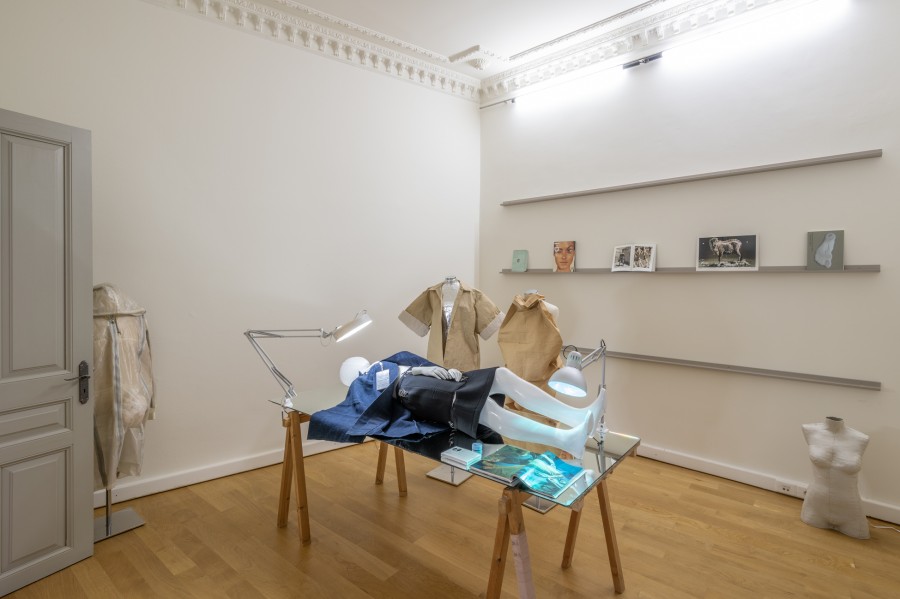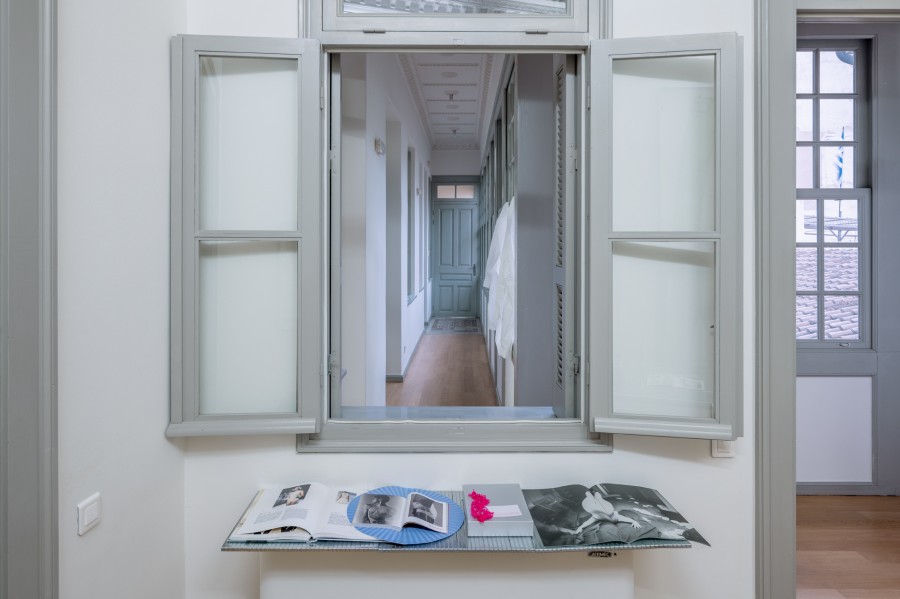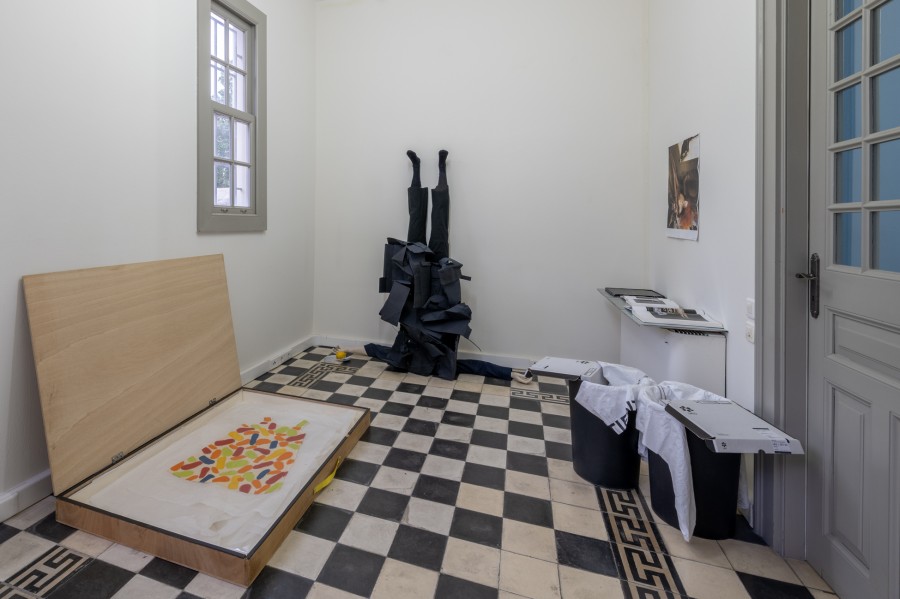Apr 30 2024
Dissecting the archive
18 April 2024 - 19 May 2024
Wednesday through Friday 16.00 - 19.00
With support from the Norwegian Ministry of Foreign Affairs / Design and Architecture Norway (DOGA).
“Dissecting the Archive” is a curatorial intervention by Else Thorenfeldt & Elise By Olsen. Two archives meet and greet each other: that of the International Library of Fashion Research – with its contemporary specialist library of books, magazines and other printed ephemera – and ATOPOS cvc – with its extensive collection of primarily paper-based garments, costumes and design artifacts from international designers. With paper as the project’s red suture, the curators dissect these two design archives with a delicate scalpel.
The curators examine the anatomy of an archive: how is it assembled, taken apart? Using clinical procedures and protocols, “Dissecting the Archive” drills into the flesh of the two archives. Opening and closing acid free boxes, in the right order, intricately removing the delicate sheets of tissue paper – with gloves and robes – extracting the garments and printed matter one-by-one. The archival objects are then researched, removed and ruptured with an archeological approach – in order to rescue and recover the ‘dying’ medium that is paper.
ATOPOS cvc’s elastic exhibition site is turned into four dissection halls. The first preoperative stage is dedicated to preliminary preparation and examination. The intraoperative stage delves into the actual dissecting process, with the objects themselves instructing the operation – under the microscope. In the postoperative stage, the results are in the laboratory for analysis and inspection. And in postdischarge, the archive segue between life and death. The curators suggest that the archive awakens through activation, yet to be sealed in storage is an archive’s ultimate end and erasure.
Torsos and medical dolls are dressed in wounded or traumatized garments – either deliberately so, or by accident. Objects that express a lived life – and clothes as communicative tools – are put on display. Garments have been taken apart by housekeepers, dry cleaners or unattentive customers; perfectly ironed pre-creased and permanently pleated Pleats Please garments, repaired ‘by design’ wounds of Comme des Garcons wool sweaters or Margiela’s infamous label with four arbitrary white stitches on the garment’s back – cut off and no longer visible. These garments are misunderstood or misread, and as a consequence, permanently scarred (or improved?) for life.
With the assumption of corporeality and three-dimensionality, garments and printed matter challenge curatorial typologies in exhibition-making. How can archival material be shown? A piece of printed matter is typically presented flat in a vitrine, thus losing its sequentiality or readability. On the reverse, a piece of clothing’s bodily or sensible function becomes secondary when presented flat, rather than on a traditional mannequin. One may argue that both types of objects become on the body, or become through use. An archive needs care, exercise and nurture on one side, and to be touched, grappled with and worn, on the other. “Dissecting the Archive” is an attempt to compare and confront these contradictions and frictions.
“Dissecting the Archive” displays printed matter & ephemera such as books, magazines, invitations, sketches, posters and press releases, combined with clothing and costume made in paper. The objects are installed throughout ATOPOS cvc’s exhibition space; on mannequins and busts, in vitrines, on dry cleaner’s hangers, on the floor, on light boxes, in small accessible library sections, on a forensic wall with vitrines as frames, in trash cans, and so on. Additionally, ATOPOS cvc’s actual archive is turned into an open workshop space by appointment, where the public can interact with, learn about – and perform their own ‘dissection’ of – the archive.
By living inside ATOPOS cvc, and intervening with the objects, the curators have approached the archive as an active space. Various modes, manners and methods of exhibition-making have been tested without the pressures of public ‘success’ and thousands of square meters to be filled. Multiple ways of categorization, thematization and preservation have been considered. With time, the curators have been finding their way through a large realm of material, ultimately creating a web of ‘red threads’, common connections and oral stories. Looking at ‘disposability’ versus ‘timelessness’ – and paper versus textile as material – with a creative and critical lens, the curatorial intervention opens up for new possibilities and narratives around alternative archival practices.





